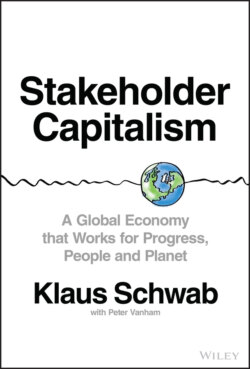Читать книгу Stakeholder Capitalism - Klaus Schwab - Страница 24
The Second Kuznets’ Curse: Inequality
ОглавлениеWhile the original Kuznets’ curse of our recent past is the result of the blind pursuit of GDP growth, there is a second Kuznets’ curse. This one relates more directly to the phenomenon Kuznets became known for in his lifetime: the so-called Kuznets curve.
As Kuznets continued his work as an economist in the 1950s, he started to theorize on an interesting phenomenon. He noticed that US income inequality had started to decline in the post-war period, as the economic boom intensified. That contrasted to the pre-war period, in which America had become a major economic power, but income and wealth were concentrated in the hands of a few. A similar observation, though less extreme, could be made for many other developed countries.
Kuznets theorized about the numbers he found, in a paper for and presidential address to the American Economic Association.36 He derived a potential game-changing insight for development economics, provided the findings held true over time. Indeed, it implied a sort of economic law. Inequality worsens as a nation begins to develop, but as development continues, inequality subsides. In other words, the price of inequality societies pay for development early on is offset by higher development and lower inequality later.
The theory put forth by Kuznets became a worldwide sensation, especially after Kuznets won the 1971 Nobel Prize for Economics, awarded for his contributions to national income accounting (rather than the theory of the Kuznets curve). Throughout the 1980s, economists built on Kuznets’ optimistic theory, plotted graphs that showed how it applied to various countries and periods, and prescribed economic development models because of it.
Figure 2.2 Kuznets waves: How income inequality waxes and wanes over the very long run
Source: Redrawn from Lindert, P. H., & Williamson, J. G. (1985). Growth, equality, and history. Explorations in Economic History, 22(4), 341–377..
There was just one problem: over time, the theory no longer held true. Some of the facts we face today reveal this.
Inequality in fact began rising again in highly developed countries. In a 2016 note, economist Branko Milanovic suggested that the current upswing in inequality could be viewed "as a second Kuznets curve", or indeed, as a "Kuznets wave" (Figure 2.2).
